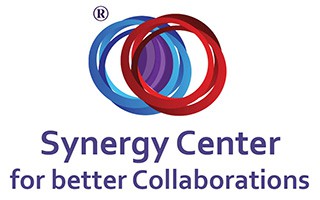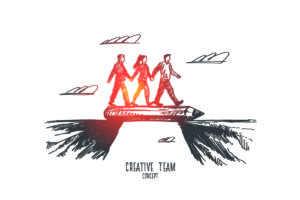In view of the twenty-first century operating environment, changes are unavoidable – postmodern organizations change regularly. However, frequent changes can contribute to unclear boundaries; hence, it’s common to find today’s organizations – postmodern organizations – experiencing problems such as overlapping (duplication) of roles and responsibilities and difficulties with distribution (devolution or delegation) of power.
These problems arise because boundaries aren’t clearly defined – they’re “blurred”, as Dr. Rami Ben-Yshai would put it in his book Organizational Synergy: A Practical Guide – Recalibrate Interactions to Achieve Peak Engagement, Productivity & Profit. And when boundaries are increasingly blurred, unclear or undefined, it’s difficult to foster a language of synergy in an organization.
Why?
Unclear boundaries are unstable and incomplete. With instability and incompleteness, comes lack of clarity, and if there were unresolved disputes or disagreements, they’re only going to get worse. In such circumstances, conflicts are more certain to arise.
Unfortunately, postmodern organizations have to endure blurred boundaries, because they arise from regular changes. As changes occur much faster and more frequently, unclear boundaries are increasingly commonplace. Things like organizational expansion, product development, and mergers and acquisitions contribute to changes.
Let’s dive deep and learn why unclear boundaries prevent synergy from taking place in an organization.
Unclear Boundaries Contribute to Feelings of Insecurity
Organizations and employees are coming to terms with the fact that changes are bound to happen. This isn’t to say that changes in organizational culture occur smoothly; in fact, more evidence indicates that employees can resist changes if they feel that they threaten their way of doing things (paradigm) and worldview, especially if culture defined past organizational success.
However, the twenty-first century environment is violently competitive, and an organization, which used to perform well in the past may perform poorly, and even close shop if something solid isn’t done to save it. Stories of one organization acquiring another organization, or merging together, are common nowadays. Mergers and acquisitions cause changes in an organization but changes also come with uncertainty.
As a result, feelings of uncertainty or insecurity concerning their future are certain to arise among current employees who may feel that their roles, responsibilities, careers, work style (culture) or worldview are under threat. To make matters worse, changes can cause roles and responsibilities to overlap, leading to disagreements and conflicts.
Case Example
There was a merger between two pharmaceutical organizations. And because the two organizations had completely different products, the sales employees across the divide had to familiarize themselves with new products.
However, the management didn’t seem to take into account the steepness of the learning curve – it’d later turn out, indeed, that familiarization required more time than what they had allocated.
Sales representatives faced a hard time handling clients. Furthermore, overlapping gave rise to a feeling that one employee was taking up the role or responsibility of another. In such a situation, the likelihood of disagreements and conflicts are high, and this can prevent synergy from happening.
Bottom Line…
The environment in which today’s organizations operate is violently competitive, and frequent and fast-paced changes — which come in form of mergers and acquisitions, product development and expansion — are unavoidable. However, changes make boundaries more unclear, undefined or blurred, and this can worsen disagreements, which may have already existed.
And when boundaries are unclear, employees find themselves performing roles or responsibilities of another, leading to a feeling that one is overstepping the boundary of another. Consequently, disagreements would get worse, and conflicts would arise. When conflicts arise out of disagreements, it can be difficult for synergy to occur.
Besides, employees tend to view changes as a threat to their work style, organizational culture, worldview or career. Therefore, changes bring feelings of uncertainty and insecurity, which may contribute to undesirable outcomes such as low employee morale, high turnover, wastage of energy, low productivity, and so on.




